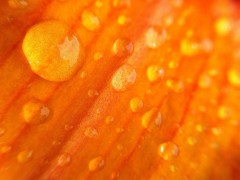
Modern DSLRs have made our life much easier. Most of the manual tasks including a few post-processing effects are now achieved during the shoot itself. One such very important mechanism is auto focus. We see through viewfinder and press shutter release button, the camera automatically focuses on the very first object placed or moving in front of the camera. Have you ever wondered how does camera automatically focus on the subject? Let us take a leap into the optical world and see how actually does a camera auto-focus by itself on the desired subject.
In camera, basically there are two sort of auto-focus mechanism:
- Active Auto Focus
- Passive Auto Focus
Active Auto Focus
Many cameras have active auto focus system, wherein they project electromagnetic waves (such as ultrasonic, visible light or infrared light) onto the subject and record the time of received reflected waves. On the basis of delay noticed between the transmitting and receiving of projected rays, camera mechanism calculates the distance between the camera lens and the subject. And thus it uses this information about the distance to move the lens (forward or backward) of the camera to correctly focus on the subject. This mechanism can calculate the distance between the camera and subject even in complete darkness. However it is not so precise because the camera knows how far is the subject from the camera, but it doesn’t know in which direction the subject is. It can’t focus if the subject is too closely placed such as in macro shots.
-
Assist Lamp Auto Focus
Assist Lamp AF is also distance based and in many cameras it also uses flash light of the camera to reflect light off the subject and calculates the delay in return to estimate the subject’s distance. The disadvantage of this is that if the user overrides the flash settings in a flash operation mode, it also disables the flash used for distance calculation, and it doesn’t work anymore.
-
Hologram Auto Focus Laser
It puts some laser patterns on the subject and reads it to calculate distance. This technology is used in 2003 in Sony Cyber-Shot F707, F717, F828.
Passive Auto Focus
Unlike the active auto focus mechanism, the passive AF is not distance based. It uses electronic analysis in the camera itself to determine whether the camera has focused correctly on an object or not. It basically has two types:
- Contrast Detection
- Phase Detection
-
Contrast Detection
It works on the principle that light rays from blurred object are less dense (i.e. have less contrast/subject information) than those reflected off sharp focused object. When the camera tries to focus on an object, it keeps shifting the lens back and front till it gets the peak contrast. The light-intensity (contrast) between adjacent pixels on sensor increases with correct focus. Contrast detection needs some light (and contrast in subject) to work and it cannot work in low contrast situation as in the case of plain scenes like a plain blue sky. Contrast based AF is usually considered accurate, but is slower than phase detection, which we will read about next.
-
Phase Detection
The TTL image (light beams) of an object is split into two separate images with the help of two different micro lenses. Two split images are made to converge onto the auto-focus sensor from the sides of micro lenses. Two different images then fall on two different auto focus sensor. The camera has a pair of auto focus sensors for each auto focus point that you see in the viewfinder. The two images should fall on the center of the auto focus sensor.

If it doesn’t fall on the center of the AF sensor, the camera keeps tuning the lens back and front till the two images fall on the exact center of the AF sensor. This mechanism can even estimate the degree of focus of an object that has been achieved and its direction. Even this mechanism needs some light to work. Phase detection works faster than the contrast detection auto focus system, but compromises accuracy in favor of speed.
Hybrid Auto Focus
This is achieved by combining the active and passive auto focus to speed up the process and improve the auto focus function. Many cameras of Fujifilm Finepix series and Nikon 1 series use the hybrid auto focus mechanism.
Artificial Intelligence Servo
Auto focus modes in some Canon DSLRs and auto focus continuous (AF-C) in Nikon and Pentax, can predict the future position of moving objects by analyzing their speed and acceleration data. It thus can shoot moving objects with predicted action to a higher degree.
Trap Focus
Trap focus is the focus priority mode in some cameras which can shoot moving objects as soon as they come in the focus plane of the lens (camera) set by user. In many other cameras it is called catch-in focus.
If the camera has active auto focus system, it can be used in darkness as well. During the night many find manual focus easier and beneficial as at night the eyes can see better than camera.
However in adequate light, it is always recommended to use auto focus if the camera has a passive auto-focus system. It is also suggested to use manual focus if you are shooting through a net or something else, where very first object is not actually the desired focused object.
An understanding of the AF system of your camera often comes in handy when in tricky-to-focus scenes. Once you know these, you will be in a better position to understand when to use auto focus and when to focus manually.


Nice knowledge module.
Keep posting such things.
I would appreciate if you could list out the current models of the most used brands and the technology used therein. May be for Nikon, Canon etc. That would make this article absolutely brilliant.
Sure. May be soon. Thanks for stopping by and complimenting :)